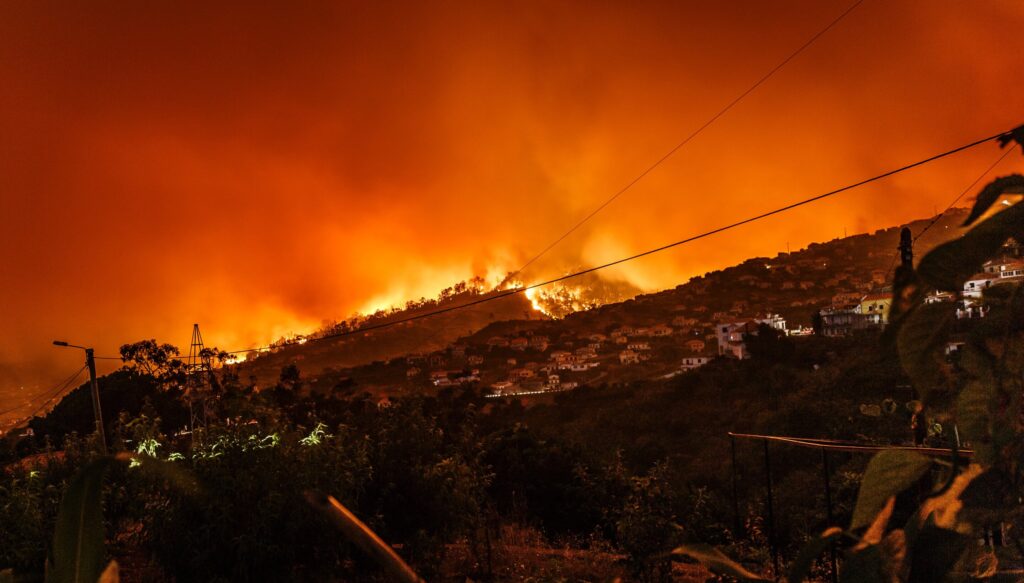
New research has unveiled the staggering impact of the August 2023 wildfires in Lāhainā, Maui, Hawaiʻi, revealing a 67% surge in the local death rate. This catastrophic event temporarily positioned wildfire as the leading cause of death in Maui. By analyzing death rates over time, scientists discovered that two-thirds more people died that August than would typically be expected.
The findings, published in Frontiers in Climate, emphasize the urgent need for policy changes to prevent future tragedies. These changes range from removing flammable invasive vegetation to enhancing disaster preparedness strategies.
Understanding the True Impact
Michelle Nakatsuka of the Grossman School of Medicine, co-first author of the study, highlighted the broader implications of the findings. “Wildfires can cause a measurable, population-wide increase in mortality, beyond what is captured in official fatality counts,” she explained. “This suggests the true toll of the Lāhainā wildfire was even broader than previously understood.”
Nakatsuka also stressed the importance of proactive prevention strategies. “As Native Hawaiians, the co-first authors are especially hopeful that wildfire mitigation strategies will center on kānaka maoli perspectives, including the restoration of traditional agroecological systems,” she added.
Fire Risk and Climate Crisis
The study’s revelations come as the climate crisis continues to exacerbate the frequency and severity of wildfires. Understanding the full extent of their impact is crucial for effective mitigation. The researchers calculated the all-cause excess death rate, which measures how many more deaths occurred over a given period than expected. They trained a model using demographic data from Maui County from August 2018 to July 2023, excluding deaths caused by COVID-19.
Dr. Kekoa Taparra of UCLA, co-first author, explained the varied causes of death linked to wildfires. “In this case, recent reports suggest many deaths were due to direct exposure, smoke inhalation, and burns. Others likely stemmed from disruptions in health care, like not being able to access critical medications or emergency treatment. Wildfires can also exacerbate pre-existing conditions,” Taparra noted.
In August 2023, 82 more deaths were reported than expected: an excess death rate of 67%. In the week of 19 August, the rate was 367% higher than expected compared to previous years.
This excess mortality differs slightly from the official fatality count of 102, although it aligns closely with the 88 fire-related deaths reported by the CDC in August 2023. “We think this might reflect a temporary drop in other causes of death, like car accidents, during the fire period, similar to what we saw during COVID-19, when deaths from some non-COVID causes dropped during lockdowns,” Nakatsuka explained.
Limitations and Future Directions
The researchers acknowledged some limitations in their analysis. The data is not geographically detailed enough to pinpoint whether the death toll was particularly high in Lāhainā itself. “Our study only covers a short time window, so we can’t speak to longer-term mortality impacts,” Nakatsuka stated. “Excess mortality models also can’t determine exact causes of death, and we didn’t have access to detailed death certificate data like toxicology reports or autopsy findings.”
Despite these limitations, the study provides critical insights into the broader health impacts of disasters like the Lāhainā fire. The researchers call for improved disaster preparedness and investment in the restoration of Native Hawaiian plants and agroecological systems to protect Hawaiʻi from similar tragedies in the future.
Planting the Future
To prevent future disasters, the researchers advocate for both immediate and long-term strategies. “In the short term, it’s critical for people exposed to wildfires to get immediate medical treatment,” Nakatsuka emphasized. “Fast, accessible emergency care can save lives.”
Looking ahead, Taparra expressed hope for more policy investment in wildfire prevention rooted in Native Hawaiian ecological knowledge. “This includes restoring traditional agroecological systems, removing dry, non-native grasses, restoring traditional pre-colonial water systems, and improving fire risk modeling to better guide preparedness efforts,” he said.
More information: All-cause excess mortality associated with the Lāhainā, Maui fires, Frontiers in Climate (2025). DOI: 10.3389/fclim.2025.1611198
As Hawaiʻi grapples with the aftermath of the 2023 wildfires, these insights and strategies offer a pathway towards resilience and safety in the face of growing environmental challenges.






